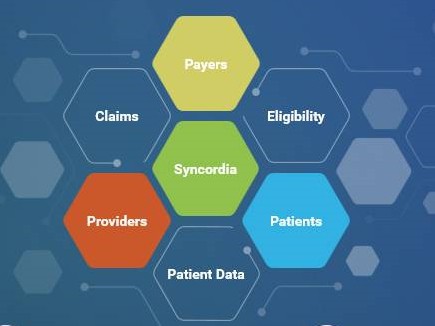
iPhone, Android or BlackBerry, Synchronica (TSXV:SYN) doesn’t care. The company, which is based in London and is co-listed on the AIM, is all about open source. Synchronica develops what is describes as next-generation mobile messaging, namely, solutions that enable email, web content, instant messaging, document viewing and mobile connectivity to social networks on literally any mobile phone currently in the market.
The Company’s flagship product, called Mobile Gateway, is offered on a white label basis to mobile operators in emerging and developed markets. Synchronica believes that simplicity on the front end leads gains on the back end; operators using Mobile Gateway are already seeing increased data revenues and reduced customer churn.
Cantech Letter talked to Synchronica CEO Carsten Brinkschulte.
Tell us a bit about your business. How do you make money?
Synchronica makes money by enabling the most basic cell phones to have the functionality usually only seen on smartphones. This includes the ability to send and receive email, synchronize contacts and calendars, connect to social networks, receive RSS feeds from websites, send instant messages and view documents. We can provide this to all cell phones without the user having to download additional software. Our customers are mobile operators around the world. They choose Synchronica because adding our solutions to their service portfolio increases their data revenue and, most importantly, reduces customer churn by providing services unique to the carrier. We have had great response to our offering and today have 83 mobile operator customers who have a total customer base of 1.3 billion users.
We also provide these services to handset manufacturers who adopt the Synchronica solutions to make attractive smartphone-like devices with basic technology. These devices are targeted at the developing world where their strong demand for an affordable smartphone.
Our customers purchase our solutions in two ways. Some purchase a perpetual licence to use the software with a predetermined number of users. To add more users or to move to a new version of the software, they have to purchase an upgrade. Others pay for each of their customers using our services on a recurring basis. We also receive service revenue for adapting our white-labelled software to our customers’ brands and regions.
Increasingly we have been moving to a recurring revenue model which provides us with a stable stream of income and visibility into future earnings.
Is your space growing? How are you positioned to benefit?
Mobile phone use continues to grow rapidly. According to Portio Research, a research firm focussed on the mobile sector, there were about 4.8 billion mobile subscribers in 2010 and that is expected to grow to 5.8 billion by 2013. What is interesting is that most of that growth will be coming from outside North America and Europe. In the developing world there were 3.4 billion subscribers in 2010, growing to 4.3 billion in 2013.
In these regions, the cell phone market is quite different from what we see here in Canada. Most of the users pre-pay for their services rather than sign contracts and switch carriers frequently to get the lowest price. They also purchase their handsets outright which, considering the much lower income levels is a significant expense even for a basic cell phone. Like the rest of the world, however, emerging markets users need email and instant messaging and want to get on social networks, share documents and get information from the internet. Most don’t have computers and can only connect through internet cafes. Through their carrier, Synchronica can provide all this to their handset. Users are then more likely to stay with their carrier and not risk losing their new services.
The mobile messaging application market is expected to grow to $10 billion worldwide over the next five years. Our position in the developing world puts in a fast growing market of $1 – 2 billion.
What is the most common misconception about your company or its business?
A common misconception is that smartphones are going to dominate the market and there will no longer be any basic cell phones. The reality is that the vast majority of handsets will only have basic features far into the foreseeable future. Portio has estimated that only 217 million of the 1.2 billion handsets shipped in 2010 were smartphones. In 2013, there will still be over one billion basic handsets shipped while smartphones will only increase by 100 million more – they simply are not affordable for most of the planet.
What’s your financial situation like?
Strong and growing. Our 2010 revenue was US$10.9 million, an 85 percent increase over 2009. In the first quarter of this year revenue was US$1.9 million, a 271 percent increase from the first quarter of 2009. When adjusted for one-time items, we had positive EBITDA of US$1.9 million, compared to a loss of US$1.8 million in the same quarter in the previous year. We have sufficient capital to continue to grow our markets and technology.
What is your key competitive advantage?
We believe we have three. First is our global footprint of 83 carrier customers which includes 10 of the 30 largest carriers and four of the top 10. These customers represent an addressable market of 1.3 billion users. This is a strong barrier to entry. Second is our technology portfolio which offers a broad range of services to all cell phones without requiring any software downloads or adjustments to the handset. No other provider can serve so many users or provide as many services. We continue to improve our technology. For example, Mobile Gateway 6, the most recent version of our software, incorporates leading-edge features such as unified messaging which integrates email, instant messaging and social messaging in one inbox and a presence-enabled address book which enables users to see the status of their contacts and choose the most appropriate messaging approach. A third strong advantage of Synchronica is our ability to grow the business through acquisitions. We have integrated five companies over the past four years which has added technologies, patents, skilled employees and customers in Russia, Eastern Europe, Latin America, Southeast Asia and India.
___________________________________________________________________________________
___________________________________________________________________________________
Leave a Reply
You must be logged in to post a comment.




 Share
Share Tweet
Tweet Share
Share




Comment